The Story of Needlify: From Code Experiment to Writing Platform
Needlify is a developer blog that started as a PHP architecture experiment in 2019. Explore its journey from custom frameworks to Symfony, open source, a tech newsletter, and its evolution into a Ghost-powered platform focused on sharing knowledge.

Needlify is more than just a blog — it’s the result of years of learning, experimenting, and evolving through code. What began as a small proof of concept during my apprenticeship eventually transformed into a fully-fledged personal project, a framework, and finally, a writing platform powered by Ghost.
The Beginning: From POC to Blog Idea (2019)
The story of Needlify starts on September 7th, 2019. Back then, it was nothing more than a proof of concept — a way to demonstrate how to implement an N-tier architecture using PHP for a project I was working on during my apprenticeship. But that small POC sparked something more: the idea to build a blog engine from scratch.
As I worked on this project, I found myself developing core components often found in PHP frameworks — things like handling database queries, managing permissions, templating the UI, and more. That’s when the idea expanded. Rather than just building a blog, I began building a framework.
TimePHP: The Framework Experiment
With that ambition, I launched TimePHP, an open-source PHP framework that you can still find on GitHub. TimePHP was my attempt to create a lightweight but structured alternative to more established frameworks. I used it as the backbone of Needlify, gradually improving both in tandem.
But as any developer who has tried knows, creating a viable PHP framework is incredibly challenging. It demands deep abstraction, endless testing, and a wide range of features to be truly useful and maintainable. Over time, I realized that this approach was holding me back from focusing on the real goal: building a platform for writing.
Shifting Gears: Symfony & Needlify v1
I made a conscious pivot and decided to rebuild Needlify on top of Symfony, a mature and battle-tested PHP framework. This shift allowed me to offload the complexity of maintaining a custom framework and focus on building the actual blog application.
The first stable version of Needlify (v1) was deployed to production on May 22nd, 2021. It worked, and it was online — and it already included most of the features I had envisioned: an administration interface, a Markdown-based writing tool, a custom Markdown parsing system, a banner system, support for tags, and a global search field.
However, as I continued to build on it, maintaining the custom implementation became increasingly complex. Over time, it grew heavy, rigid, and difficult to scale or refactor cleanly, which ultimately led me to rethink the architecture.
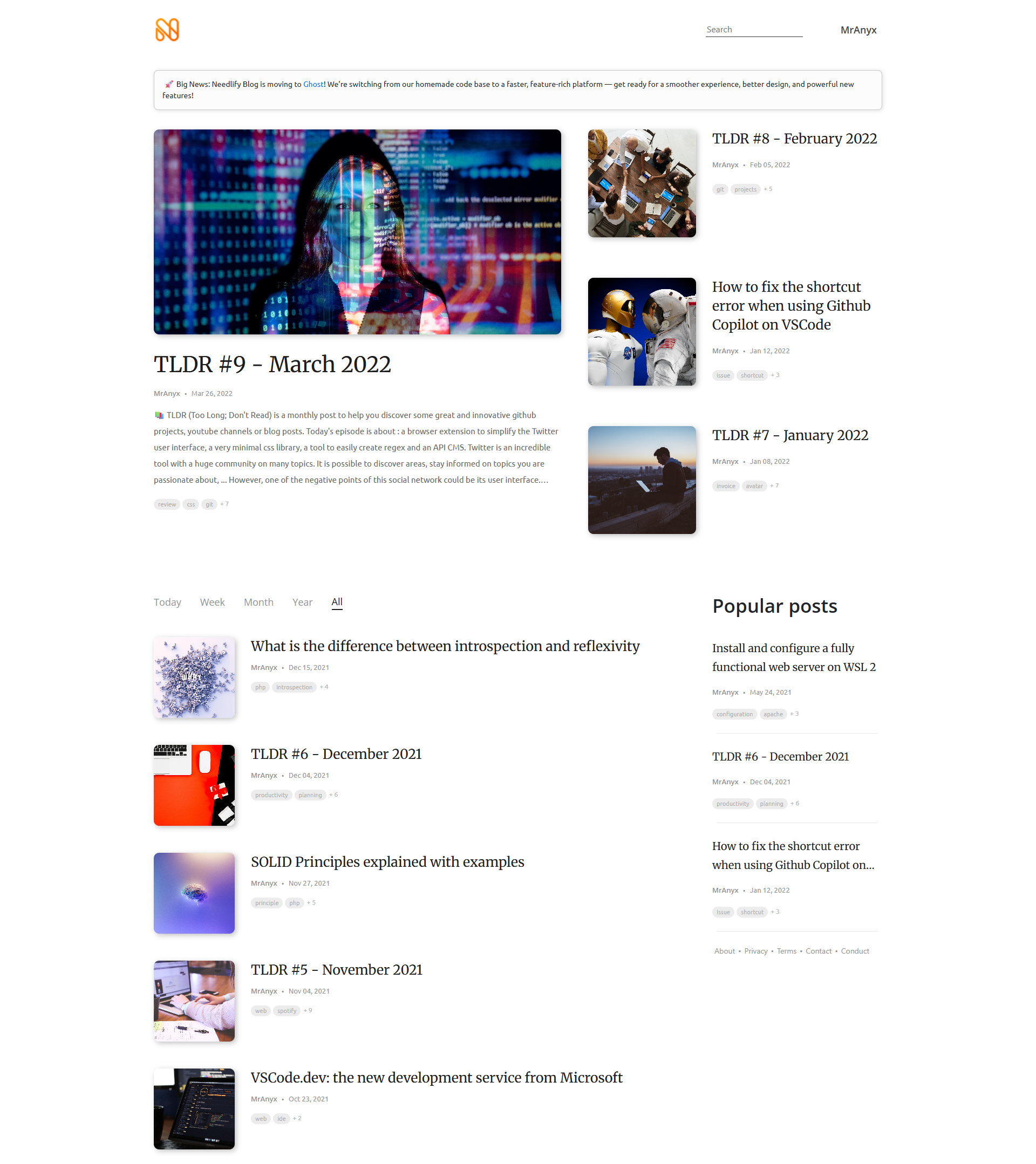

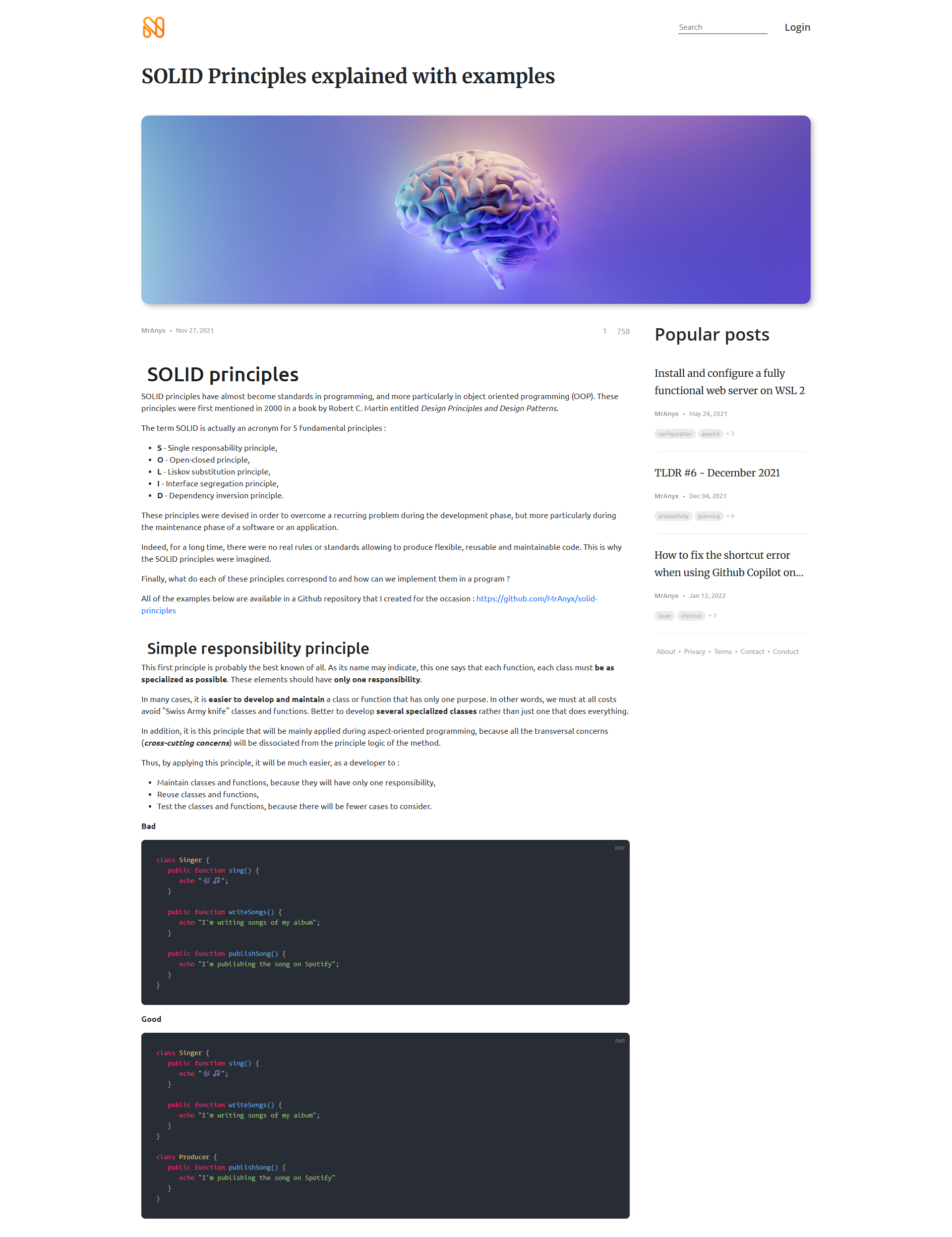


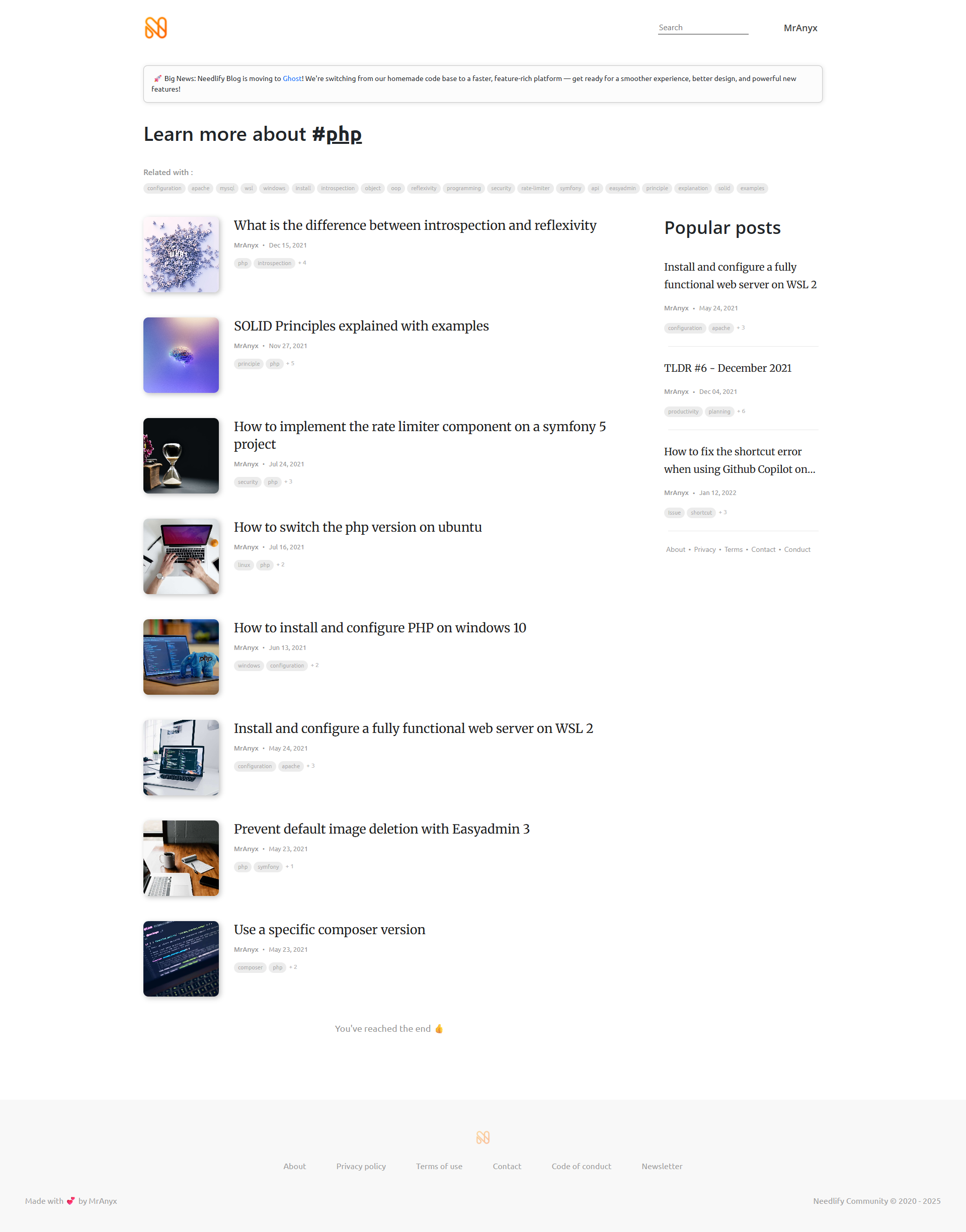

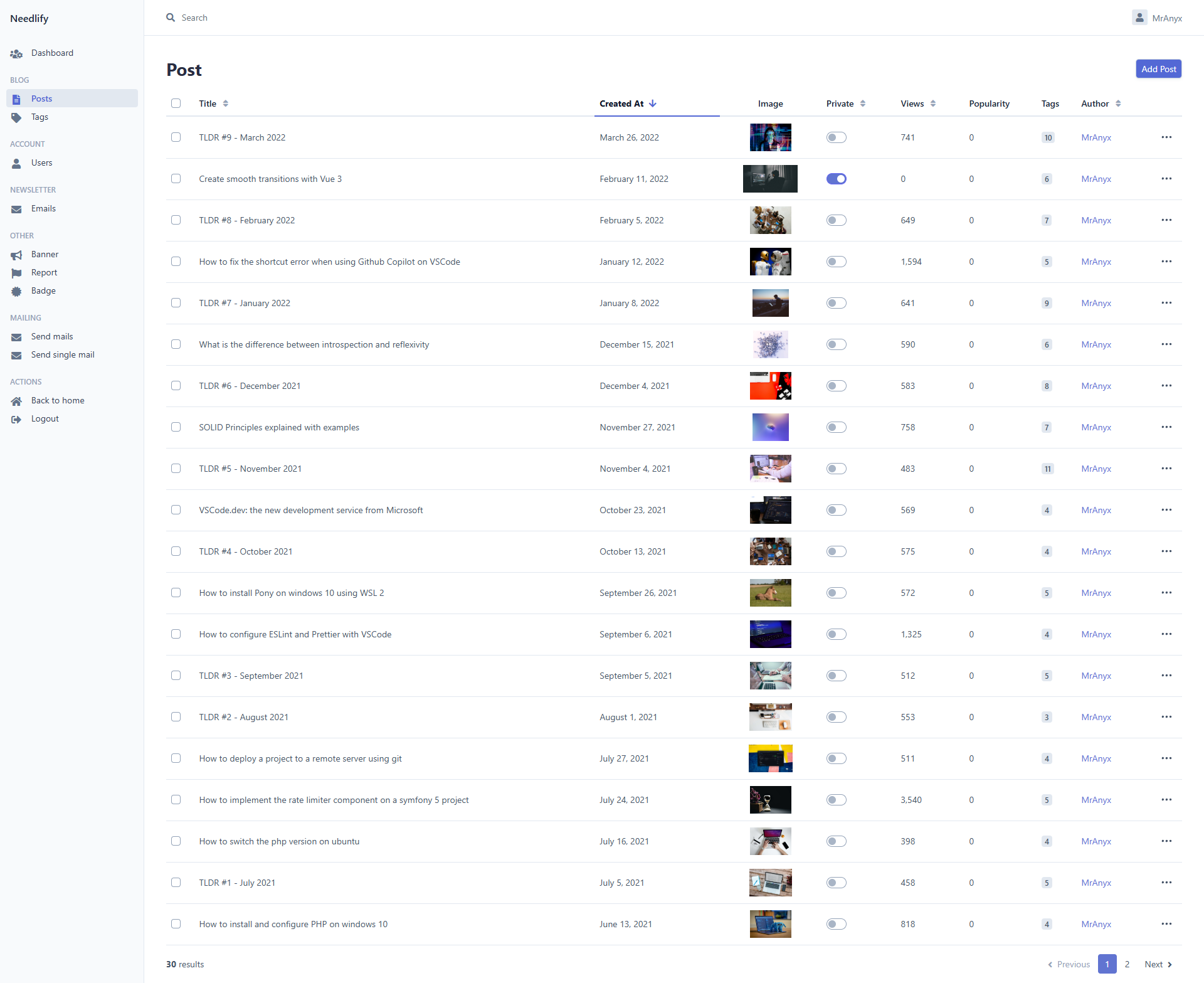
The Lithium Newsletter
In parallel with Needlify, I also launched a newsletter called Lithium on January 19th, 2022. It was sent out every Wednesday at 6 PM, with the goal of sharing valuable and inspiring content with fellow developers and tech enthusiasts.
Each edition of Lithium featured a curated list of five GitHub repositories or blog posts related to technology, software development, tools, or trends worth checking out. It was my way of shining a light on interesting projects and helping others discover tools and ideas they might not have come across otherwise.
To streamline the process, the entire publishing workflow was automated using the Notion API and a custom webhook. This allowed me to manage content in a structured Notion database and trigger the newsletter delivery efficiently and consistently every week.
After a steady run of 102 editions, the final issue of Lithium was released on December 27th, 2023. While the newsletter is no longer active, its spirit lives on in the way I continue to share useful and inspiring resources here on Needlify.
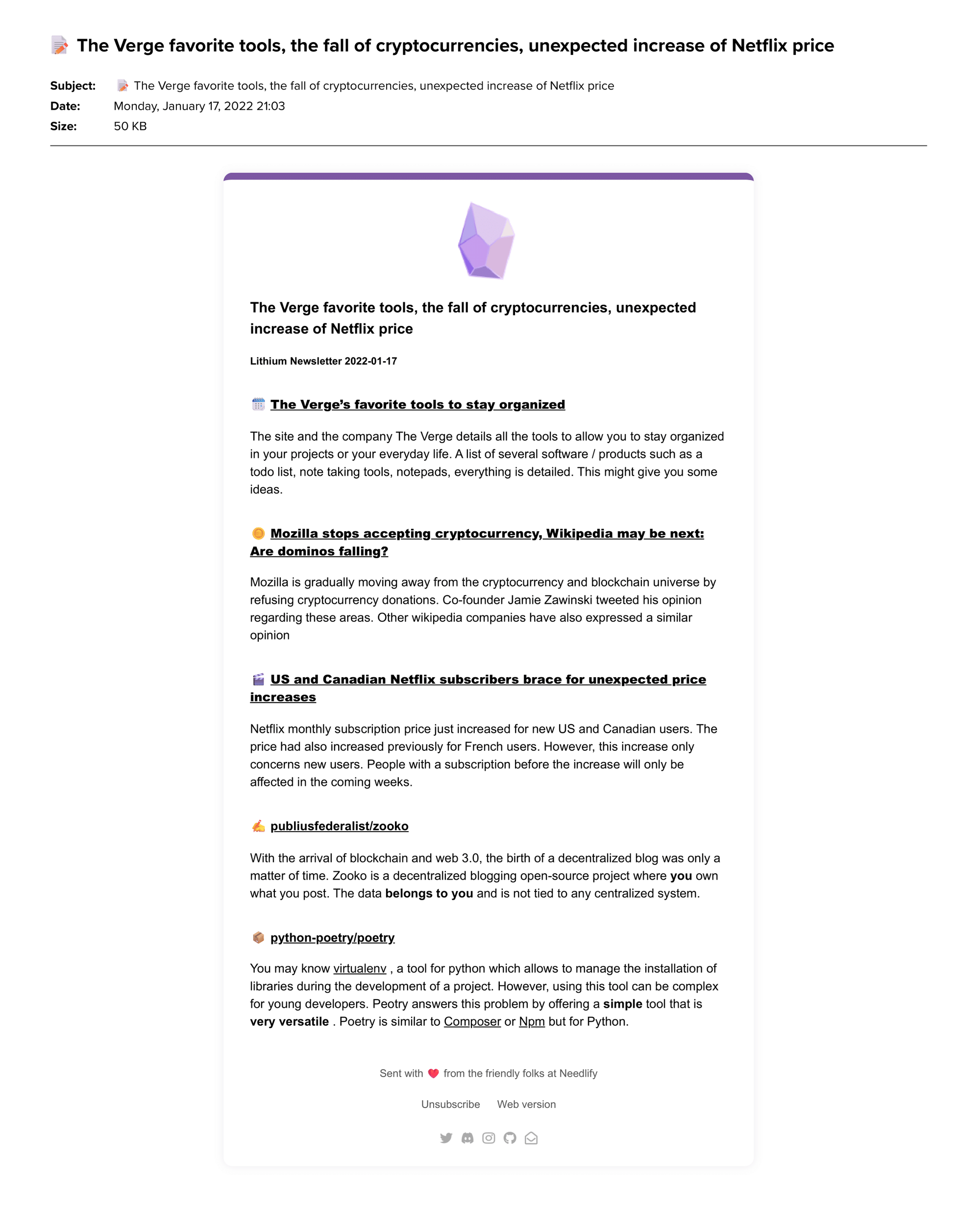
Rewriting from Scratch: Needlify v2
So, on August 22nd, 2022, I made a bold decision: I wiped the slate clean and started from scratch. The goal was to build a cleaner, simpler, and more maintainable foundation — one that reflected everything I had learned from the first version. This time, Needlify v2 was open source from the beginning, allowing others to explore the code, contribute, or learn from it.
The new version went live on February 13th, 2023, with a significantly improved codebase. It introduced several meaningful features, including support for courses and lessons, a topic-based content structure, a refined user interface, and security improvements to the Markdown parsing system. I also took the opportunity to remove unnecessary features like user badges, which added complexity without real value, and instead focused on more impactful additions such as a high-performance image optimization system and a social media–style feed UI on the main page to enhance content discovery.
While the platform was far more robust and well-structured, I gradually realized that — despite all these technical and functional upgrades — the user experience still lacked the polish and ease of use I was aiming for, both as a writer and for the readers.
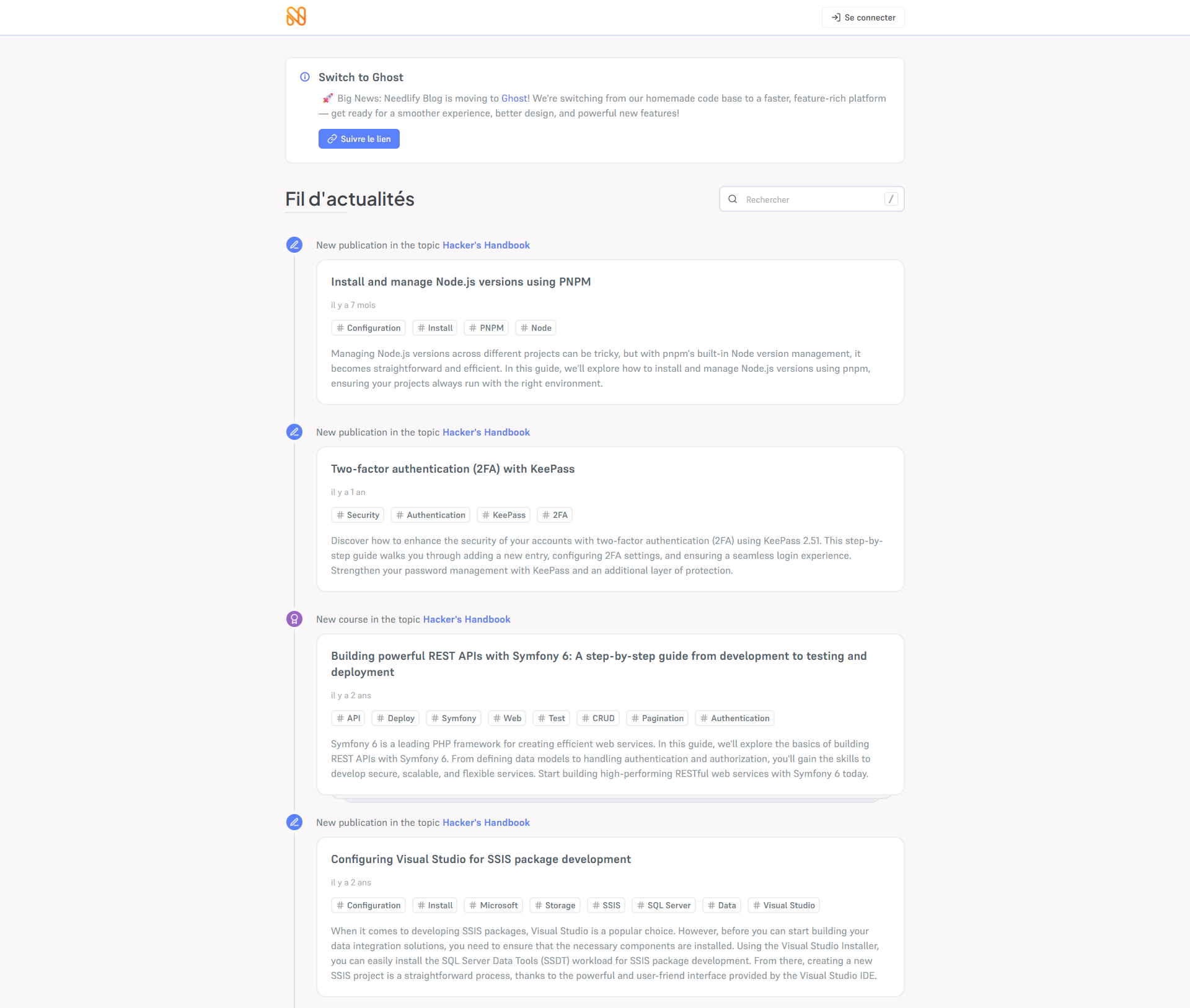
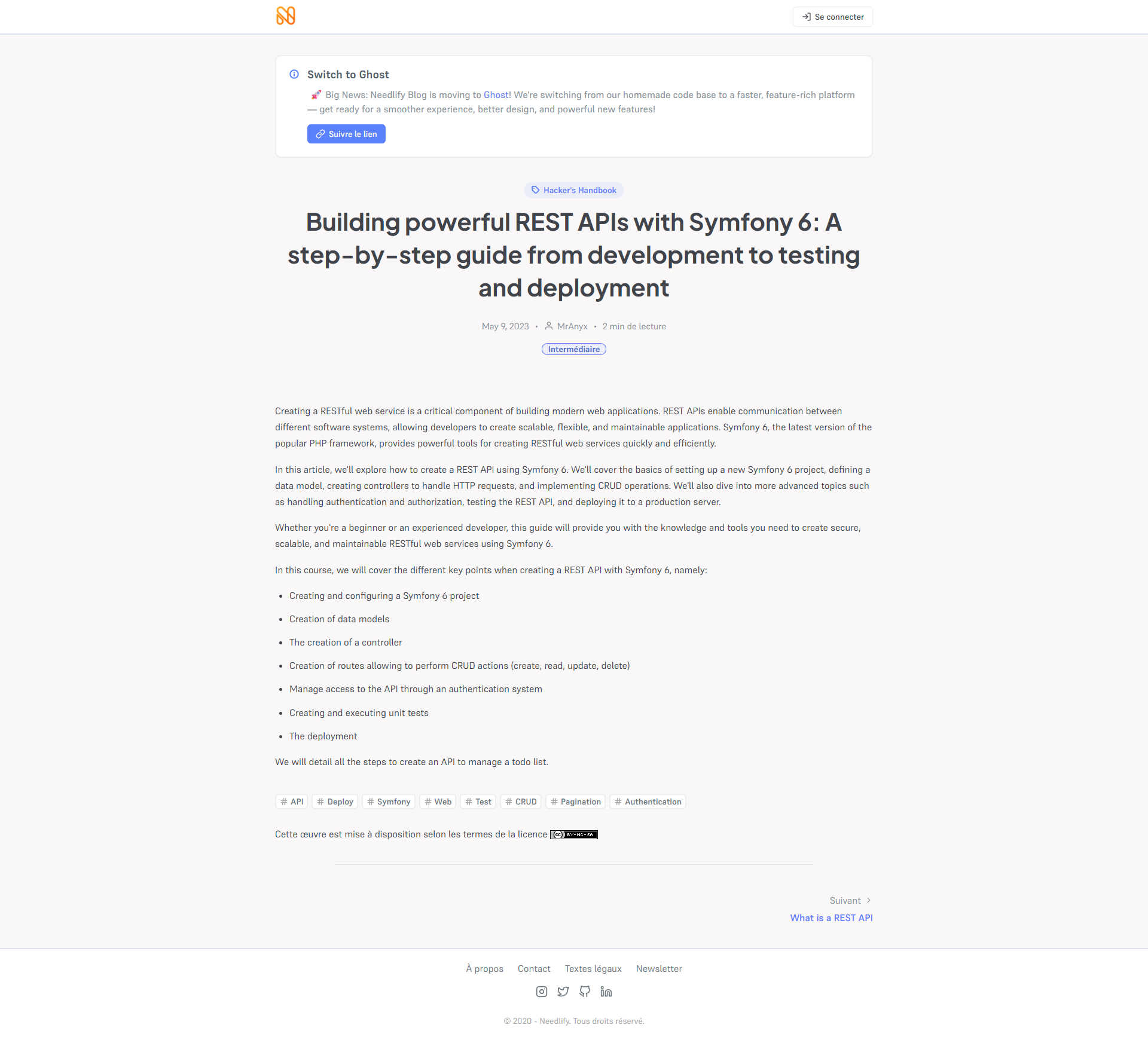
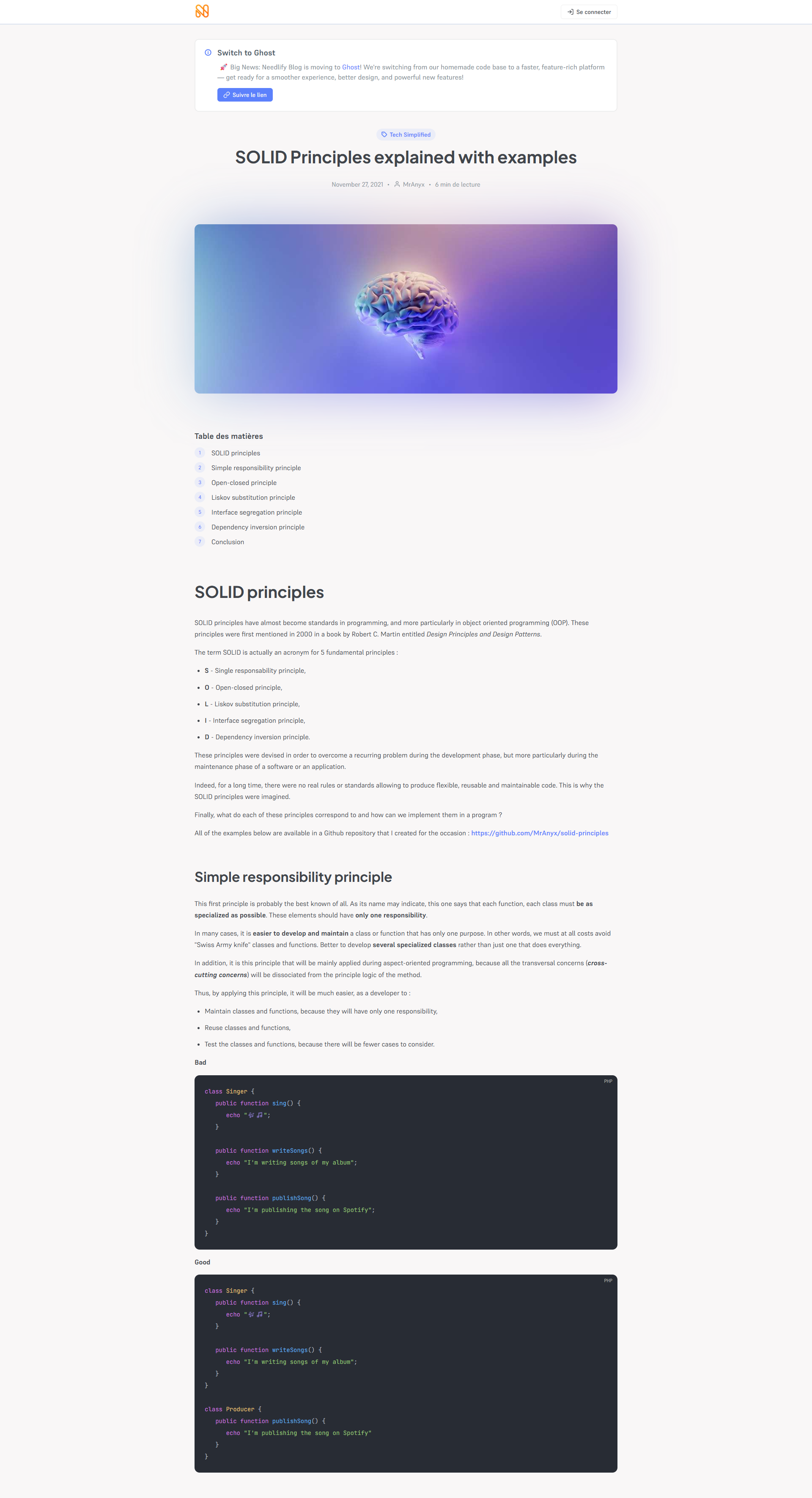

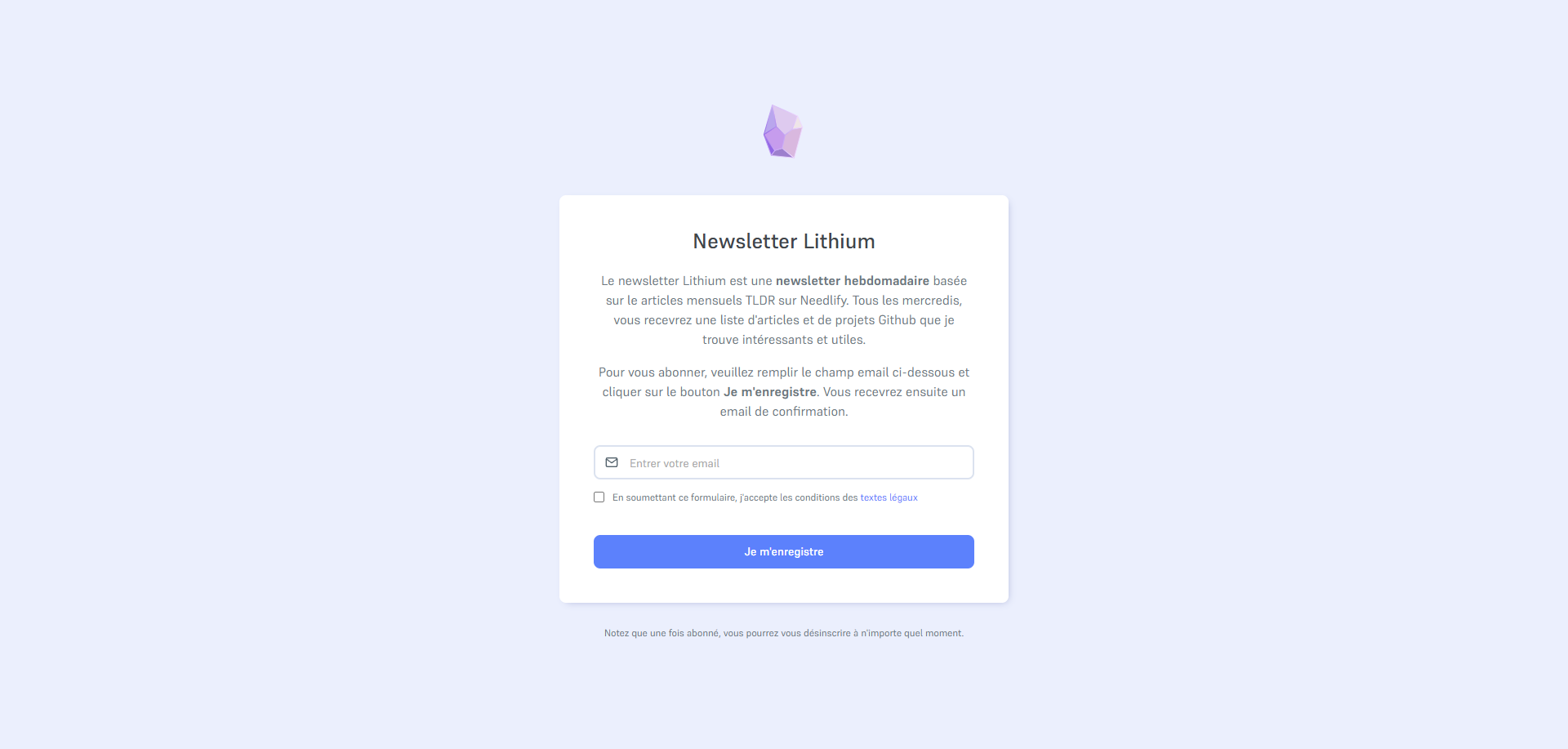
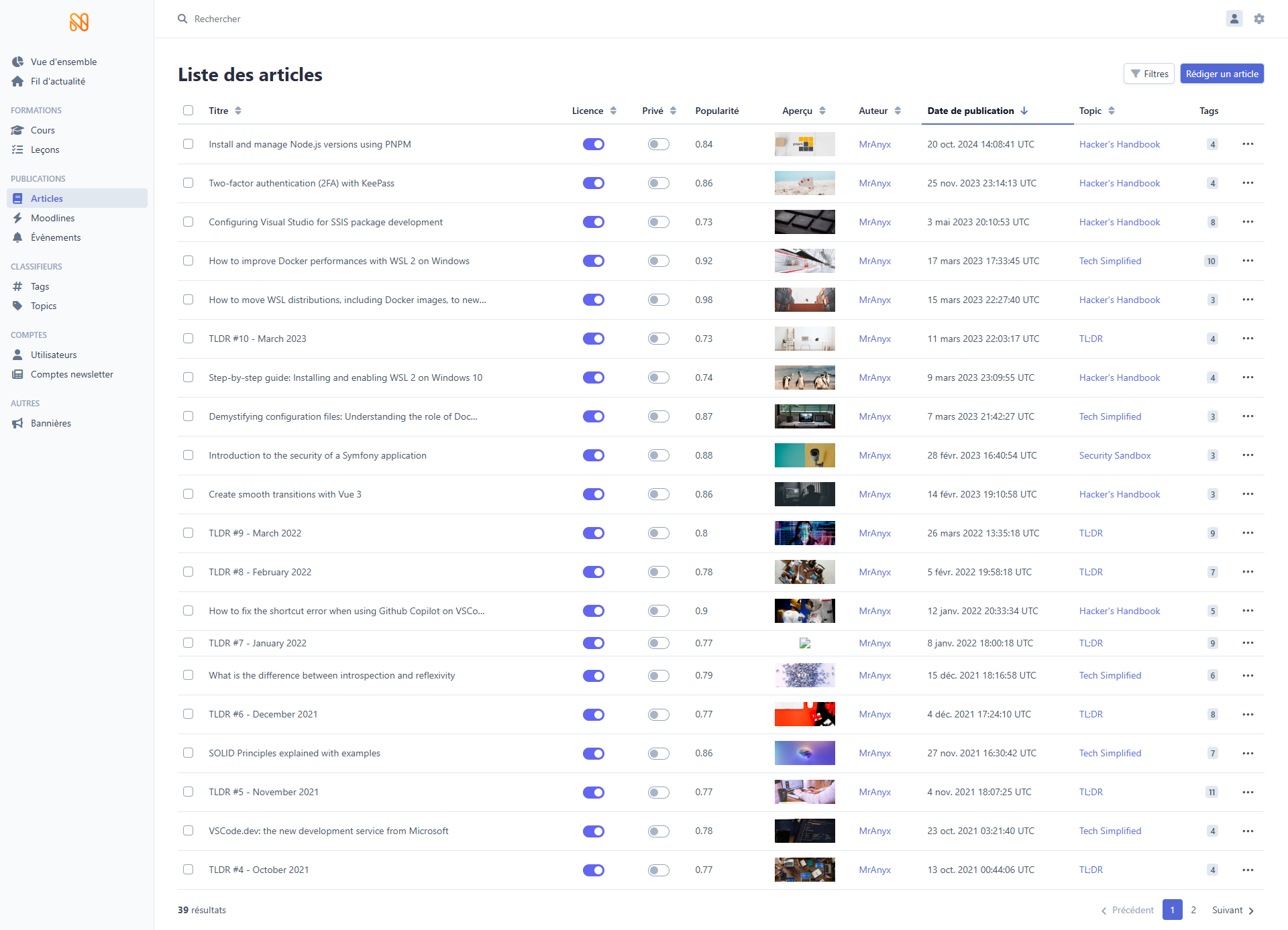
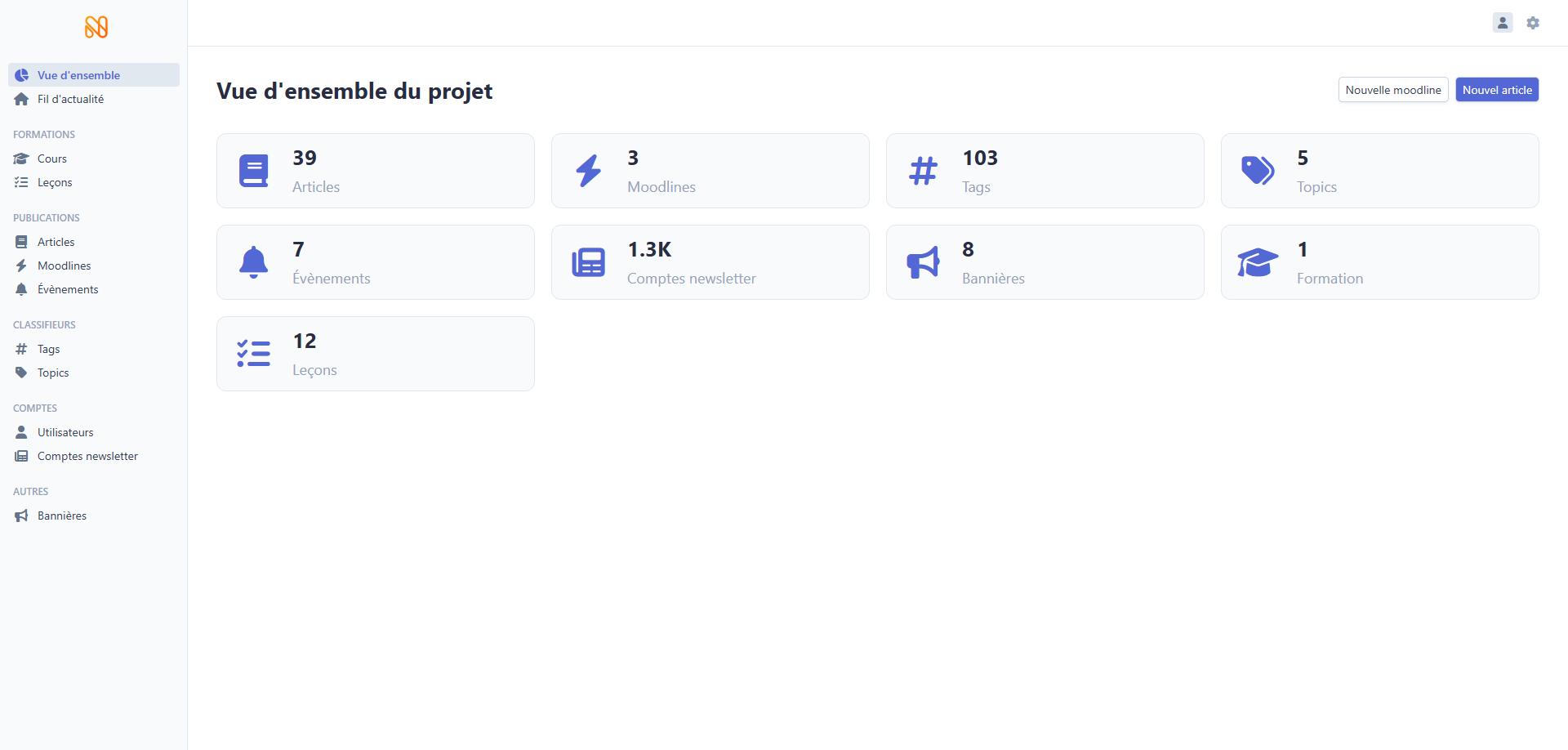

Moving to Ghost: Focusing on Writing (2025)
On April 26th, 2025, I deployed Ghost on my VPS and began migrating all of my old articles and course materials. This marked a major turning point for Needlify — a conscious decision to leave behind the constant cycle of building and rebuilding, and instead focus entirely on writing.
By embracing a platform designed specifically for publishing, I can now devote my energy to creating content, sharing insights, and exploring ideas without being distracted by infrastructure or technical overhead. It's the start of a new chapter — one centered on clarity, consistency, and creativity.
A Passion for Sharing Knowledge
Throughout this entire journey, one thing has remained constant: my passion for technology and development, and my desire to share what I learn with others. Whether it's through tutorials, experiments, curated content, or technical thoughts, Needlify is my way of giving back to the community that has taught me so much.
